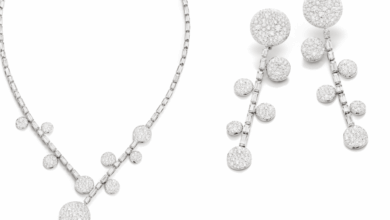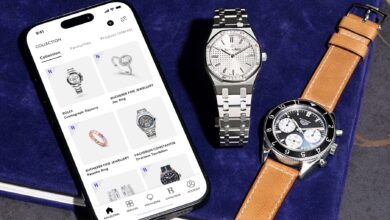Jewellery crime and how to deal with it
2015 saw a significant number of jewellers throughout the UK targeted by robberies. We asked Jewelers Mutual, a US insurer, for comprehensive advice on how to ward off crime, or deal with it if the worst happens to your shop

Register to get 1 free article
Reveal the article below by registering for our email newsletter.
Want unlimited access? View Plans
Already have an account? Sign in
Casings
Statistics confirm that the vast majority of all crimes committed against jewellery businesses are preceded by the criminals’ casing of the targeted business and its operations. Learn to detect when individuals may be casing your business, and take steps to show the would-be criminals that your business is an undesirable target.
Clues that your store is being cased:
Be wary if a visitor:
- Appears nervous or fidgety
- Asks unusual questions, such as how many employees are working or the location of your safe or alarm panel
- Doesn’t want to give his or her name
- Is vague about what he or she is looking for
- Looks around the store, rather than at the jewellery, and doesn’t make eye contact
- Asks to use your non-public bathroom
- Is outside your normal customer profile (clothing, age, gender, jewellery interests)
- Is dressed to disguise appearance (bulky clothes, sunglasses, wig)
If you sense something wrong:
- As with all customers, greet these individuals and engage them in conversation by offering your name and asking theirs.
- If they are thieves, your attention will be unwanted and they may leave. After all, they want to be anonymous.
- Alert other employees by using a pre-established code word or phrase.
- Make more employees visible on the sales floor.
- In a suspicious situation when no criminal act is under way, one employee should visibly leave from the front of the business with a mobile phone in hand. The employee should observe from a safe distance and be prepared to call the police.
- Make sure cabinets, safes, vaults, and showcases not in use are locked and the keys removed.
- Store customers’ merchandise in a safe place that is out of sight, such as a locked cabinet.
- Have visible security cameras—that are operational and maintained—so thieves know they are being monitored.
- If a suspicious person asks to see loose stones or other product not on display, simply deny that you have the merchandise requested.
- After the suspicious person has left, call the police or shopping centre security and ask them to visit your business as soon as possible. Explain that you think your store or business is being cased for a potential robbery or burglary. Police visibility can deter a crime.
- Write a description of any suspicious persons and situations. If possible, include the colour, make, model, and licence plate number of the vehicle they are driving. Record these incidents in your Log Book.
- Use the suspicious incidents as a training tool for employees to increase their awareness of these events.
- Share the information with the local police.
Guide to crime definitions:
Robbery is the unlawful taking of property by direct threat or force. For example, a robber is a person pointing a knife or other weapon at store associates for the purpose of taking goods from the store.
Theft is an unlawful taking of property without force, such as by fraud or stealth.
Burglary involves breaking into closed premises and taking goods.
Casing is the surveillance activity that criminals undertake in planning their crimes. Casing involves the criminals observing your premises and procedures as preparation for committing a robbery, theft, or burglary.
Selling with security
Jewellery thieves use trickery, sleight of hand, stealth, the element of surprise, and the threat of force to steal from jewellery businesses.
To reduce the risk of theft of all types, always follow these three security habits:
- Meet and greet — Greet each customer who enters the store and make immediate eye contact. Your customers will appreciate the attention; however, anyone casing your store to plan a crime will feel uncomfortable. If you are already waiting on a customer, let the new visitor know that someone will be with him or her shortly.
- One on one — Serve one customer at a time. This makes customers feel important and deters thieves who prefer sloppy customer service. Show only one item at a time to reduce the risk of sneak theft, grab-and-run theft, or “switching” jewellery.
- Turn the key — Keep showcases locked and remove the keys when unattended. To keep your keys at hand, place them on a key holder that fits on your wrist or a key chain worn around the neck. Never place keys on the counter where they could be taken or hang them where a thief could make a quick, unnoticed grab.
Other recommendations:
- When showing jewellery, be prepared with display pad, cleaning cloth, tweezers, loupe, calculator, pen, and any other required tools so you won’t need to step away.
- Pay attention to each customer and to each piece of jewellery that you are showing.
- Keep every slot in display trays filled with merchandise or markers so you know if an item is missing.
- Require identification before showing high-value items.
- Be alert for customers who attempt to distract you.
- Inspect showcases whenever you clean the glass, looking for evidence of tampering.
- Don’t permit the public to use your staff toilet unless there is access from the main floor.
- Distribute high-value goods among several showcases located away from the entrance.
- Ask salespeople, delivery people, and repair or service workers for identification before doing business with them.
Robbery
The personal safety of your customers, collegaues, family members, and yourself is always the most important consideration. Robbers are dangerous. By being prepared, you can respond in a manner that minimises the risk of injury. Robbers are likely to use surprise and an extreme show of force to get victims to comply with their demands.
Preventing a robbery
- Opening and closing are the most dangerous times for a jewellery store or business. Open and close with at least two people so one can open or close while the other watches from a safe distance with mobile phone ready to call the police.
- When opening, keep the doors locked, remove merchandise from safes and vaults, and arrange displays. Unlock your doors only when you are ready for business.
- At the close of the day, clear the store of all customers and lock the doors before you remove merchandise. Store as much merchandise as possible in safes or vaults.
- Do not open your doors to anyone who is not an employee while you are preparing to open or after you have closed. Robbers may dress as employees of delivery companies or repair services.
- Have at least two employees on the show floor at all times.
- Most robberies are preceded by a casing during which the thieves check out your store’s security and plan their attack. This is your best opportunity to prevent a robbery. See the section on ‘Casings’.
- Distribute high-value items among several showcases away from exits.
- Keep showcases locked and remove the keys unless you are showing jewellery from that case.
During a robbery, follow these recommendations:
- Do not resist. Stay calm. Focus on surviving.
- Cooperate. Obey the robber’s orders.
- Remain still. If you must move, tell the robber what you are going to do and why. If you are warned not to move, then don’t.
- Do not reach for a holdup button or phone while the robber is present.
- Avoid eye contact with the robber. If possible, glance at the robber and try to remember specific things such as gender, age, hair color, tattoos, shape and color of eyes, scars or marks, speech patterns, and clothing.
- Expect to be threatened. Assume the robber will harm you if you resist.
Immediately after a robbery, but only when you are certain the robber has left the premises:
- Lock all doors. This is always the first step to ensure that the robbers cannot return, to protect injured persons, and to preserve evidence for the police.
- Call the police.
- Care for any injured people.
- Try to preserve any potential evidence, including fingerprints.
- Call your insurance company to report the loss.
- Write down the specifics of the robbery and the robbers.
Theft
Theft involves taking property with the intent to steal it from its rightful owner. Common theft methods include:
1) grab and run, 2) sneak theft, 3) distraction, and 4) switches.
Grab-and-run theft
- While you cannot treat customers as thieves, showing one item at a time will reduce the risk of a grab-and-run loss.
- Permit the customer to compare two or more items by displaying a second item on your wrist or hand and holding it close to the item the customer is holding.
- Show high-value items in a separate room or area where both of you can sit.
Sneak theft
- Greet each customer who walks into your store. If a sales assistant is not immediately available, let the customer know that someone will assist him or her shortly.
- Lock showcases and remove the keys when you are not showing an item from the case.
- Wait on one person at a time.
- Don’t get caught up in a customer’s hurry and neglect sound security procedures.
Distraction theft
Be alert if a large group of ‘customers’ enters the store and causes distractions. This could set you up for a theft from an open showcase, a grab and run, or a theft from the back room. See the section on ‘Casings’.
- Keep showcases locked and remove the keys when not in use.
- Restrict access to the back room with a locked door or gate and a motion-activated chime.
- Shut and lock the safe if you use it to store items such as diamond wallets, customer repair items, and scrap metals when your store is open for business. Alternatively, store those items in a locked cabinet during business hours.
- Avoid being hurried.
- Have visible surveillance cameras, which can serve as a deterrent.
Switches
- Thieves may visit your store several times and even make purchases so you lower your guard.
- Show only one item at a time.
- Closely examine each item under magnification before handing it to a customer, and then reexamine it when the customer hands it back to you. Polish the item and return it to the showcase once you are certain that there hasn’t been a switch.
- If you discover a switch, follow your store’s procedures, which may include asking for a manager’s immediate assistance or informing the customer that the item he or she gave you is not the original.
Burglary
Leaving jewellery in a showcase when a retail store is closed to business is an invitation for burglary. To deter this crime, many insurance policies require the insured jewellery business to store a specific portion of its merchandise in a safe or vault when closed to business.
To reduce the risk of burglary:
Most nighttime or after-hours losses involve jewellery left out that is visible from outside of your store. The rule, ‘In the safe or out of sight’ is the best security practice to follow when your business is closed.
- Maintain your burglar alarm system.
- Respond to all burglar alarms.
- Store merchandise in a locked safe or vault. Be sure to comply with the in-safe warranty on your insurance policy.
- Don’t leave even low-valued jewellery in showcases that are visible from outside your store. Store this merchandise out of sight in drawers, cabinets, or other storage areas if it doesn’t fit in your safe or vault.
- Do not use covers that fit over your showcases. These imply there is valuable jewellery stored within—a strong temptation, especially to amateur burglars.
- Consider storing excess merchandise in a bank safe deposit box.
- Never reopen your doors after regular business hours when you have closed to business and locked your doors.
- Do not close your business alone. Someone should watch from a safe distance with a cell phone available to call for help if needed.
- If the police or your alarm company call and ask you to come to the business for any reason, ask for the caller’s name and badge or identification number. Then, look up the phone number and call your alarm company or police. Do not leave your house or open your door until you have verified the caller’s identification. This could be an ambush.
Jewelers Mutual is an American insurance firm founded in 1913. It is one of the leading jewellery insurance providers in the US. Visit www.jewelersmutual.com for more information.







